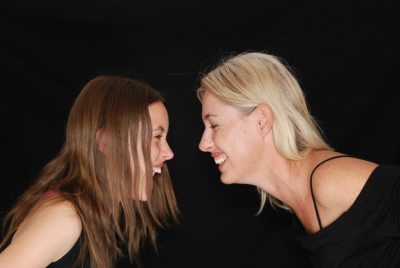It’s fun to share a good laugh, but did you know it can actually improve your health? With the year we’ve had, we could all do with a little help, so we chatted to certified Laughter Yoga teacher Heinrich Visser who was recently awarded the first Laughter Ambassadors Title in South Africa!
Passionate about working with people who need laughter in their lives, Westville North-based Heinrich facilitates laughter workshops for corporates, NGOs and NPOs around the country and overseas. His approach is holistic and he manages to leave even the most sceptical person convinced! “We’ve been through a very stressful year and people are anxious about the unknown. One way to bring down stress levels is laughter. Nature’s way of managing stress levels, laughter is a positive emotion that comes with a host of health benefits, all of which can help improve your life,” says Heinrich. Where some might turn to less healthy habits as a means of coping, more and more people are turning to Laughter Therapy as an alternative cognitive-behavioural means of making physical, psychological and social relationships healthy, ultimately improving your quality of life.

The history of Laughter Therapy
Laughter Therapy was developed in 1995 by Dr Madan Kataria, who formulated the practice on the basis that our bodies can’t tell the difference between real and fake laughter. Because both kinds of laughs produce the same beneficial results, it doesn’t matter if a person has to fake a few laughs! Determined to make laughter part of people’s daily routine, Dr Kataria went to a park in Mumbai and asked people to join a laughter club. The practice of Laughter Therapy has grown since then, and today there are more than 6000 laughter clubs in 120 countries. Laughter Therapy is practiced in the corporate world, schools, prisons, homes for senior citizens and hospitals.
“Studies show that laughter can help relieve pain, bring happiness and even increase immunity. Unfortunately, many people don’t get enough laughter in their lives. One study has found that children laugh as much as 400 times a day, but adults tend to laugh only 15 times a day.”

5 ways laughter reduces stress
* Laughter reduces the level of stress hormones like cortisol, adrenaline, dopamine and growth hormones. It also releases and increases health-enhancing hormones like endorphins
* Laughter increases the number of antibody-producing cells we have and enhances the effectiveness of T cells. This means a stronger immune system, and fewer physical effects of stress.
* Have you ever felt like you had to laugh or you’ll cry? Have you experienced that cleansed feeling after a good laugh? Laughter provides a physical and emotional release.
* A good belly laugh exercises the diaphragm, contracts the abs and works the shoulders, leaving muscles more relaxed. It even provides a good workout for the heart and massages the internal organs.
* Laughter connects us with others. Just as with smiling and kindness, most people find that laughter is contagious. So, if you bring more laughter into your life, you can most likely help others around you to laugh more and realize these benefits as well.

Laughter exercises
Contrary to what many of us think laughter therapy is not laughing right away from beginning to end. Instead it’s done in three phases focussing more on enjoyment and good feeling. Generally these exercises are done in groups and outdoors.
Phase 1: Start with clapping hands in a rhythm to activate acupuncture points and people. Eye-contact must be maintained.
Phase 2: Deep-breathing exercises. These exercises help us increase focus on our day-to-day activities; they lighten the mood and relax your lungs.
Phase 3: Laughing like a child playfully without any reason is the main aim of this phase. To achieve this, different kinds of laughter are employed:
- Hearty Laughter – Arms pointed to the sky, chin raised, laugh heartily. Direct your laughter to come straight from your heart. Arms can be brought down as needed.
- Imitation Laughter – Imitate someone else’s voice you think is funny.
- Embarrassing Scenario – Recall an embarrassing incident and retell it, laughing at the end or throughout hysterically out of embarrassment or nervousness.
- Dyslexic Laughter – swing both hands gently from side to side chanting ho ho ha ha ha, which engages both left and right brains.
- No-Sound Laughing – silent Laughter. With the mouth opened as wide as possible, participants laugh, looking at each other’s faces, and make different gestures showing their palms to each other, while shaking their heads and hands.
- Nasal laughing – where the sound of your laughter only comes from your nose
- Celebration laughter – Share any tiny incident worth celebrating, with the group and start laughing in enjoyment.
- Silly Laughter – acting and appearing silly helps us identify and confront personal limitations and uneasiness. Act like you did as a child, and observe whether it is enjoyable and comfortable for you. Explore the absurd, the ridiculous and the unbelievable.
- Swinging Laughter – this has a lot of playfulness. All members move outwards by two meters to widen the circle. Then move forward by making a prolonged sound of Ae Ae- Aeeeee, simultaneously raising the hands and burst into laughter while meeting in the centre and waving hands.
Details: If you’re keen to give Laughter Therapy a bash, contact Heinrich on 061 091 0748 or e-mail [email protected]






